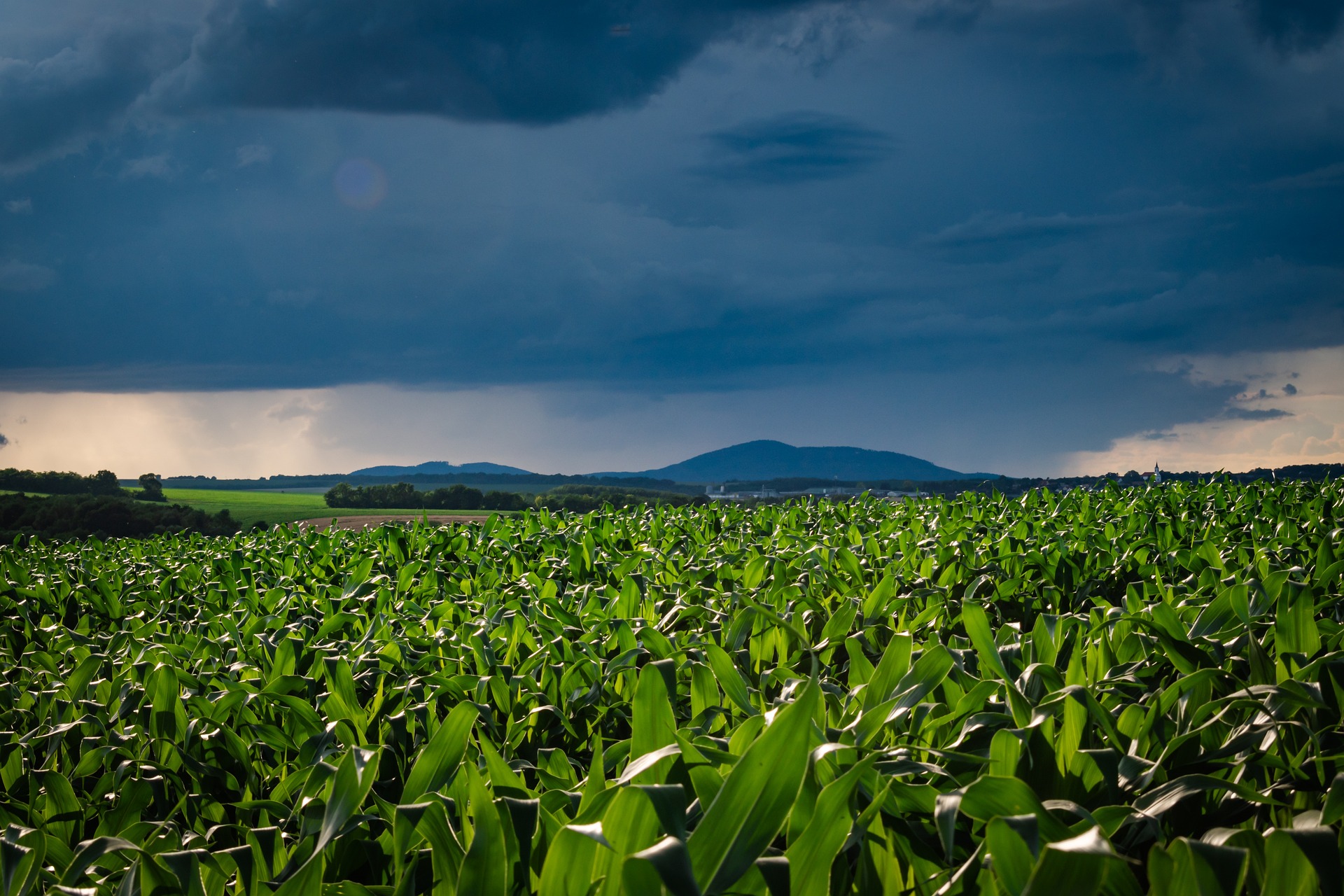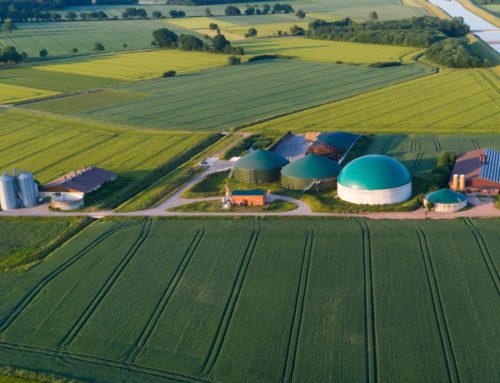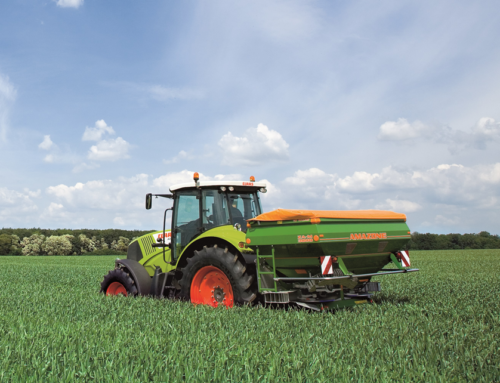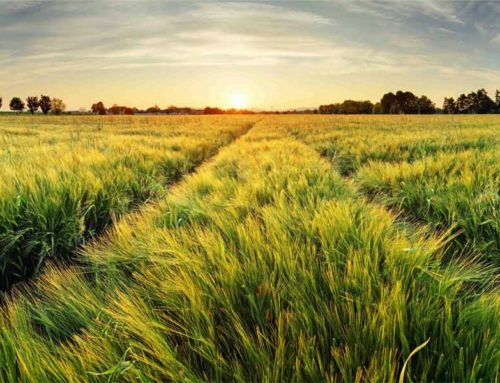The importance of the climate for agriculture
The climate is one of the major influential factors in agriculture. The term “climate” – unlike “weather” – describes the atmospheric conditions to be expected over a long period. In contrast, “weather” denotes the perceptible, short-term atmospheric conditions at a specific location on the planet. Essentially, the climate dictates which crops can be cultivated in the open air. It also has consequences for livestock farming. In short: The climate fundamentally determines what types of land use are possible.
Various elements must be examined in order to describe the influence of the climate on agriculture. Phenology – the study of seasonal growth and development phenomena – allows us to draw certain important conclusions for agriculture with regard to the climate. Before the advent of reliable weather reports, these types of observations were used to predict the weather through country lore. Nowadays, the latest models use sensors and satellite technology to produce meaningful forecasts. The climate parameters that are important for agriculture are incorporated into powerful software programmes such as the meteoblue Weather Professional component of the 365FarmNet platform.
The most influential climate factors are precipitation, temperature and sunlight. These have a direct effect on plants and animals in farming. They also determine the spread of pests. Particularly in arable farming, the farming climate can sometimes produce favourable growth conditions for pests such as fungi. Alternatively, it might generate drought stress, which can increase plant susceptibility to disease. This alone demonstrates how critical the climate is for successful crop cultivation in agriculture. Below, we explain the effects of climate factors on agriculture in detail.
Effects of the climate on crop cultivation
Das The climate is one of the key location-based factors in farming. Climatic conditions dictate not only whether a plant will grow but also how it will grow. Yields, yield stability and quality are also closely connected to the climate. The fact is, that with the exception of precipitation, climatic conditions cannot be adjusted to suit agricultural requirements.
Low precipitation can at least partially be balanced out by irrigation, and too much rainfall can be drained away. However, if precipitation remains low for longer periods of time, the decrease in the groundwater level means that this will no longer work. In terms of how the climate affects farming, the timing of precipitation plays a role in addition to the total annual rainfall. Large amounts of rain over a short period of time are difficult for the ground to absorb, which is where well-rooted, humus-rich soils have the advantage. Soil of this kind can absorb greater quantities of water, which prevents nutrients from running off the surface. Increased soil aggregate stability and water infiltration as a result of consistent vegetation are the right solution for an adapted water management strategy when responding to the changing climate in farming.
The correct choice of crop variety is another measure farmers can use to align their farming strategy with climatic conditions. Some crop varieties have a high tolerance to drought stress, for example. However, even for this kind of crop, excessively long dry spells can result in high yield losses or crop failures. On the other hand, excessive moisture increases the susceptibility of plants to disease. Appropriate varieties for these conditions exist, too. A farm management information system can help to analyse how such varieties can be integrated into existing crop rotations. An example of this is the Crop and Seed Planning tool by 365FarmNet, which incorporates the entire catalogue of the Bundessortenamt (German National Office for Plant Varieties). Note: A broad and diversified crop rotation is important in any case when it comes to risk management and disease avoidance/prevention.
Temperature is another key factor. In order to grow, plants require a specific temperature range, and this can differ depending on their growth phase. The ideal temperature range for wheat is between approx. 10°C and 25°C, for example. If the farming climate deviates too far from this range, the crops can suffer from cold or heat stress. Vernalisation is an exception to this. During early development, wheat requires temperatures below zero to form reproductive organs, for instance. This effect can be problematic for sugar beet, however. After exposure to temperatures below zero, bolting can occur. This is characterised by small beets with a correspondingly low yield. In fruit farming, late frosts in springtime can also cause damage to buds, endangering yields. These examples show that the reciprocal effects of the climate in agriculture are extremely complex.
Sunlight, nature’s driving force, is another important factor. Too much sun can scald leaves and crops, inhibiting photosynthesis and restricting growth. The amount of biomass produced by a crop depends on its growth rate and development time. The latter describes the time between the plant emerging and it being harvested. Growth rate, on the other hand, denotes the quantity of biomass produced per unit of time, and decreases as temperature increases. In the case of wheat, for example, this means that farms with mild winters and relatively cool summers can achieve higher yields than those with harsh winters and extremely hot summers.
For agriculture, any extreme weather conditions are problematic. Intense hail can completely destroy foliage, as can heavy storms. Plants can snap or start to lodge during storms, preventing them from thriving. These adverse climatic effects on farming can cause crops to fail and make planning difficult.

Alignment strategies in response to climate changes in agriculture
Various measures can be taken to align crop cultivation strategies with the farming climate. Practical solutions include developing a localised strategy and selecting varieties with the appropriate properties. Extreme weather conditions with heavy rain or long dry spells can be countered with adjusted crop rotations and tillage practices. Farmers can gain a full picture of their farm’s crop status by going digital with a farm management information system. The free basic version of 365FarmNet is a great choice. It allows farmers to plan new crop rotations in advance and simulate their application on the farm. They can also use digitalised documentation to measure and optimise the results of their strategy.
Making the right choice of crop variety is essential when responding to climate changes in agriculture. Employing a localised strategy and crop management system – for example, growing varieties in different maturity groups or with different root systems – can help to manage risk and adapt to climatic conditions. It is advisable to choose varieties that can tolerate sunlight and temporary water shortages. Pest resistance and nutrient and water efficiency also contribute to favourable results.
Clever water management plays a part in successful crop cultivation, too. Increased soil aggregate stability and water infiltration through consistent vegetation are helpful factors if heavy rainfall is an issue. In regions prone to long dry spells, water-saving cultivation techniques such as mulch tillage and direct seeding are highly beneficial. If rainfall is not able to fully meet the needs of crops, it also makes sense to obtain a water abstraction licence for field irrigation.
When it comes to tillage, the priorities are soil protection and humus production. Topsoil that is biologically active, permeable, aerated and well-penetrated with roots should be at the heart of an adapted cultivation strategy. This protects against erosion, nutrient leaching and evaporation, which improves humus formation and water retention, and promotes soil life. Soil-improving crops with deep taproots increase the porosity of the soil and therefore its capacity for root penetration. Harmful soil compaction must therefore be avoided at all costs if your goal is to adapt your farm to the climate. Ultimately, adaptation is the best response to our changing agricultural climate.
Press contact
Yasmin Moehring
Tel. +49 30 25 93 29–901
Mobil +49 151 17 28 18 69
moehring@365farmnet.com



